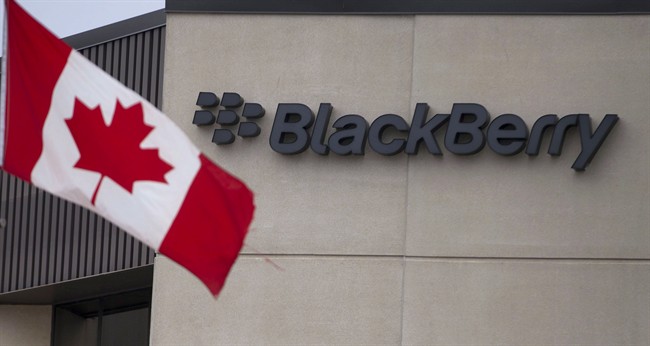TORONTO – Troubled Canadian smartphone-maker BlackBerry announced Monday it has struck a deal to sell itself to a consortium of investors led by Fairfax Financial for $4.7 billion.

With Fairfax’s initial offer in place, analysts who cover the company say there’s a 50-50 shot that competing bids will emerge for all or parts of the company between now and a deadline of sorts of Nov. 4.
Meanwhile, we take a look back at the history of the tech company.
1984: Research In Motion is founded by University of Waterloo engineering student Mike Lazaridis and University of Windsor engineering student Douglas Fregin
1988: RIM begins developing products for Mobitex wireless packet-switched data communications networks, often used by military and police forces, firefighters and ambulance services
1988: RIM releases the DigiSync Film KeyKode Reader, a product for the motion picture industry
1992: Jim Balsillie joins RIM. He would become co-CEO along with Lazaridis
1996: RIM releases the Inter@ctive Pager, also known as the RIM 900, its first keyboard-based device
1997: RIM goes public on the Toronto Stock Exchange
1998: The RIM 950, a dramatically slimmed down two-way pager, is released
1999: The stock symbol RIMM is added to Nasdaq. RIM announces it has received FCC approval in the U.S. to begin selling its first BlackBerry device, the 850, with mobile email
2002: RIM adds voice calling capabilities to the BlackBerry 5810
2003: RIM is added to the Nasdaq 100, releases its first BlackBerry with a colour screen
2004: RIM marks its 20th anniversary announcing it has passed the one-million subscriber mark. By year’s end it has more than two million subscribers using its devices
2005: RIM hits four million subscribers, Balsillie and Lazaridis are named among Time magazine’s 100 most influential people
2006: BlackBerry releases the first in a line of consumer-friendly Pearl devices, adding a digital camera and multimedia capabilities
2007: RIM becomes the most valuable company on the TSX with a market capitalization surpassing $67 billion. The company has 10 million subscribers and introduces the first of its Curve BlackBerrys. But RIM is caught flat-footed by the overwhelming response to Apple’s new iPhone
2008: RIM stock hits a high of $149.90 in June but the euphoria is short lived. The stock market crash in September takes its shares below $50 and its first touchscreen BlackBerry, the Storm, is critically panned as iPhone hype grows with the new 3G model
2009: BlackBerry launches its App World marketplace to compete with Apple’s App Store. Its selection pales in comparison, a problem that is never solved
2010: RIM surpasses 40 million users and announces it has shipped its 100 millionth smartphone. It buys Ottawa-based QNX Software Systems, which would help reshape its operating system software going forward. A few months after the first iPad hits the market RIM unveils its PlayBook tablet but says it won’t be released until early the following year
2011: An unpolished PlayBook is finally released in the spring, later than expected, and reviews are not kind. A few months later the company announces it’s cutting 2,000 jobs. In October, users around the world suffer through a four-day service outage
2012: Lazaridis and Balsillie step down as co-CEOs and are replaced by Thorsten Heins. Balsillie also resigns from the board of directors. Within months Heins announces 5,000 layoffs and a delay to the critical BlackBerry 10 software update, which is seen as the company’s last chance to stay alive. The stock touches a low of $6.10 in the fall
2013: Heins finally unveils BlackBerry 10 and the first two smartphones to use the operating system, the Z10 and Q10. The company purchases a Super Bowl ad to build hype for the new company, which officially changes its name to BlackBerry. The phones don’t sell well enough to bolster its fortunes. Lazaridis steps down as vice chairman and leaves the board of directors. In August, the company says it is open to “strategic alternatives” including a possible sale. On Friday, the company announced it was laying off another 4,500 employees and planned to refocus on the enterprise market. On Monday, it announced Fairfax Financial Holdings offered to buy the company in a deal worth about US$4.7 billion.

Comments